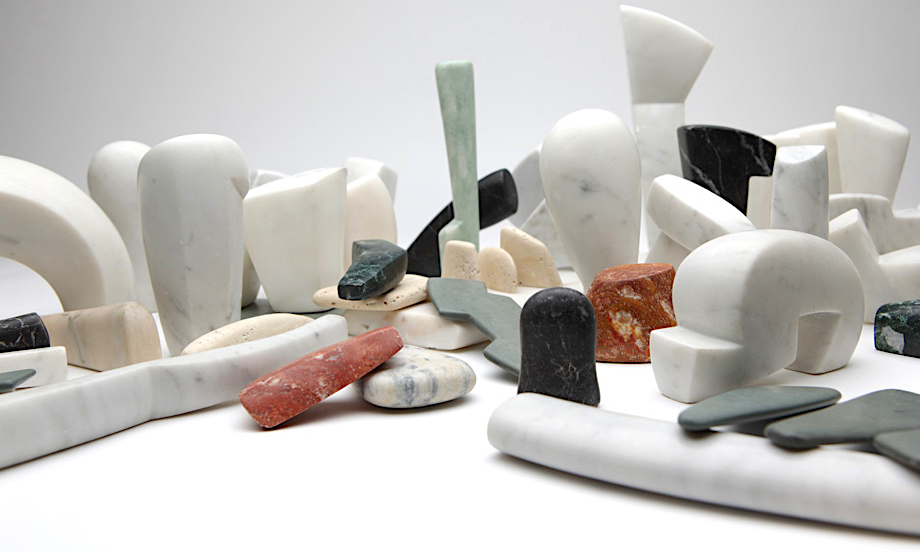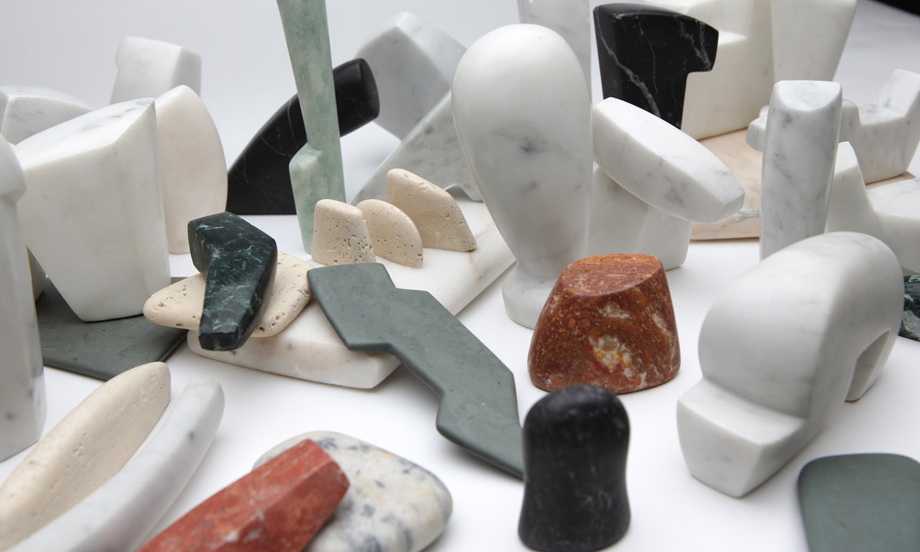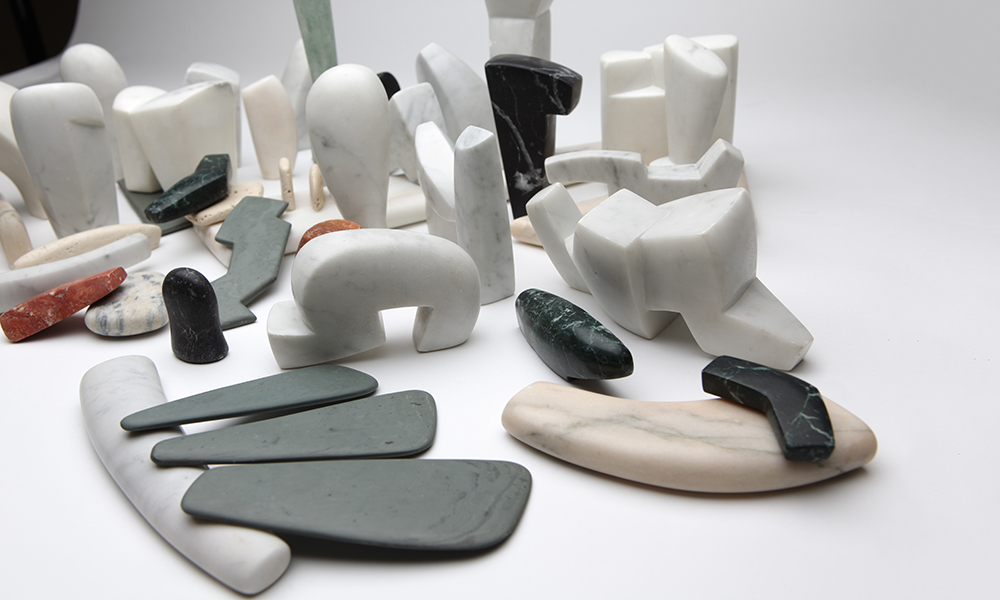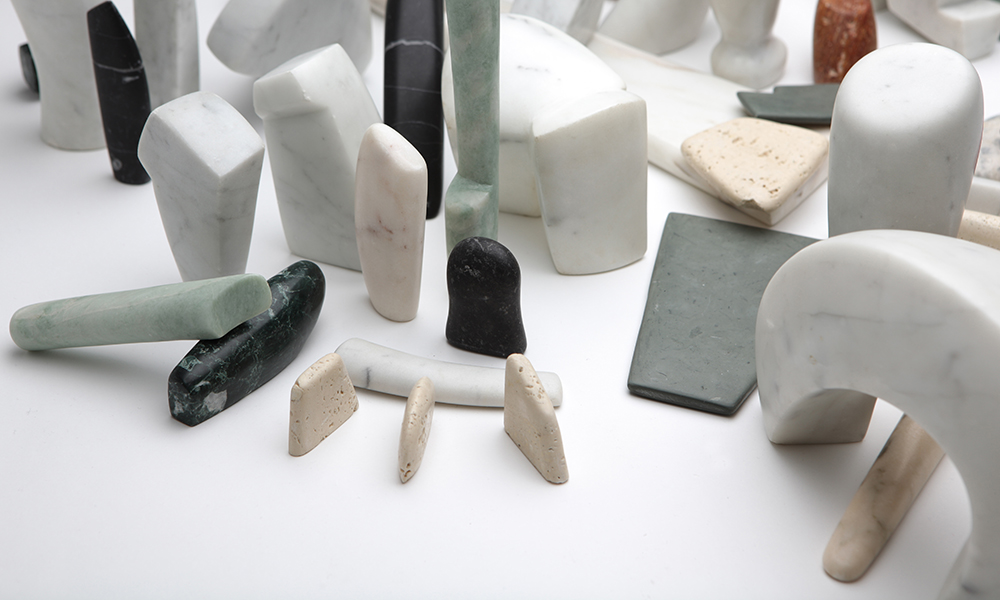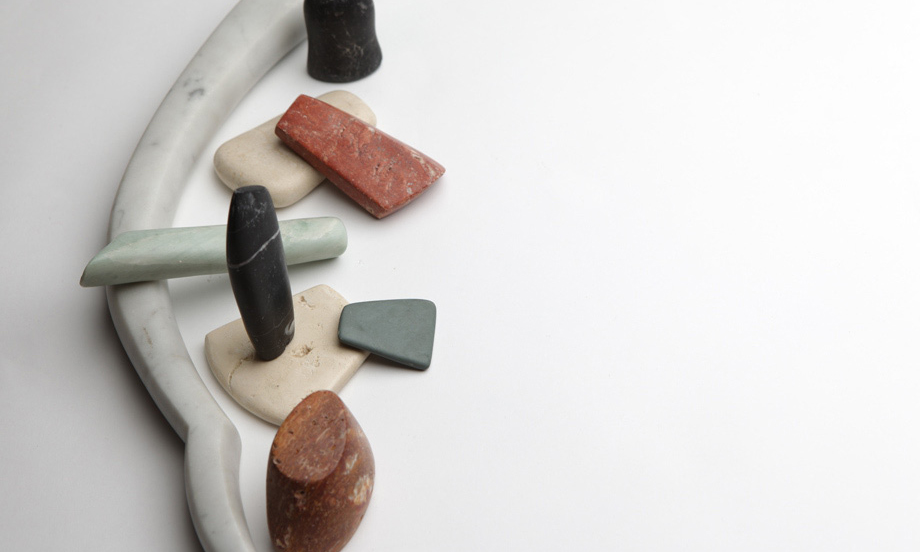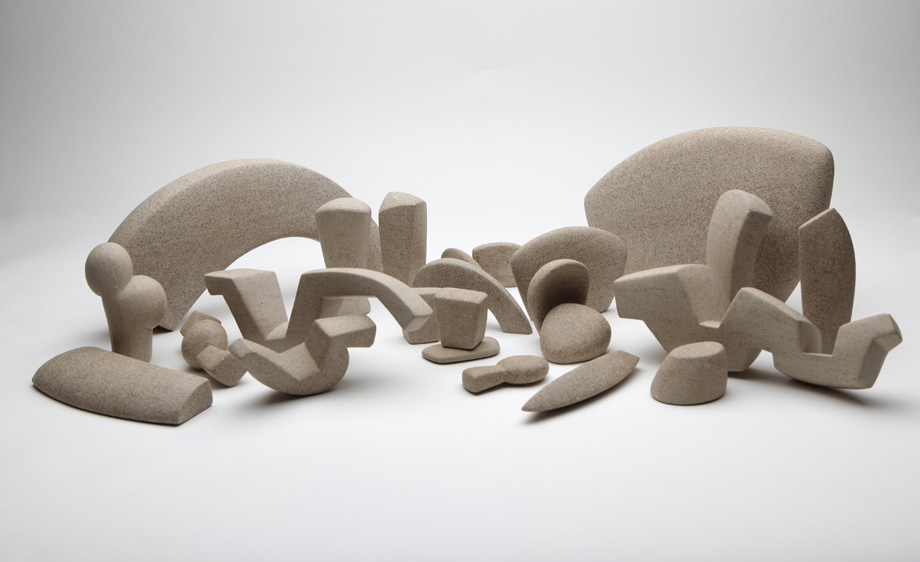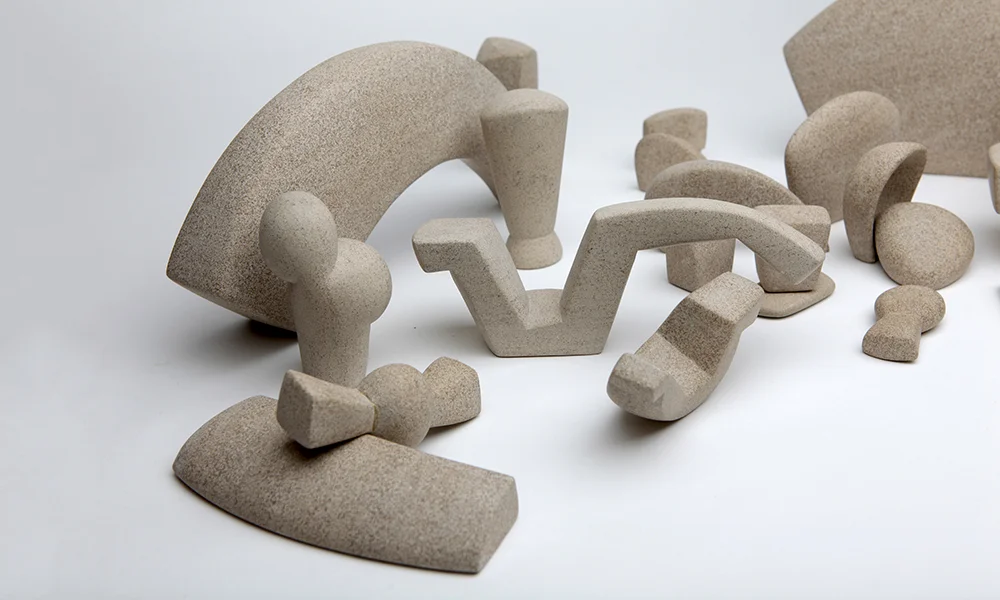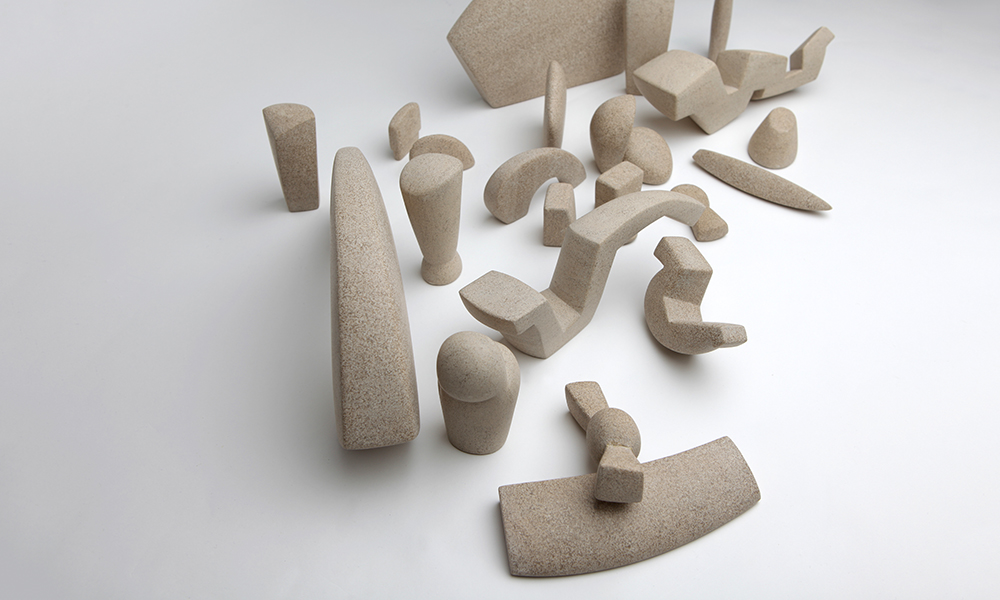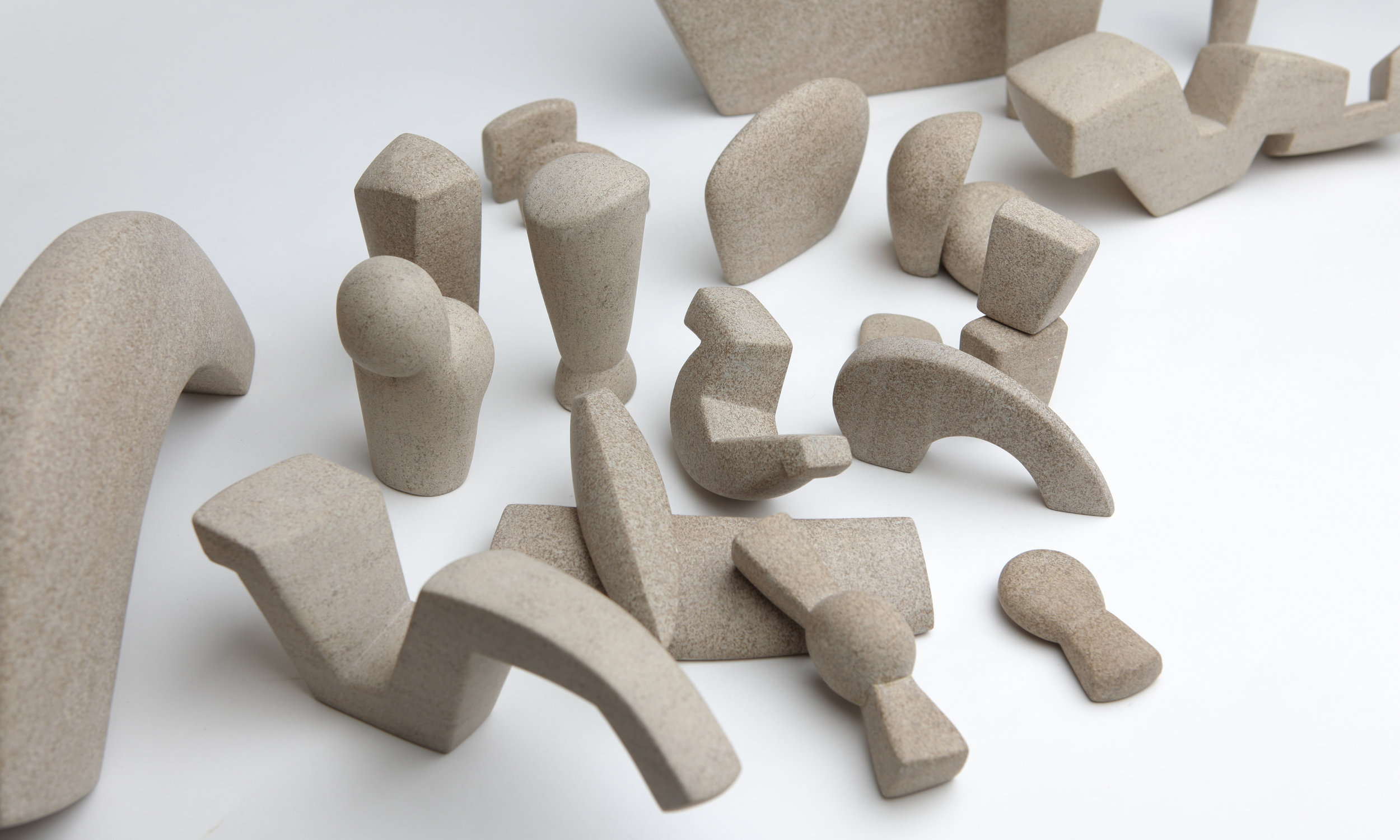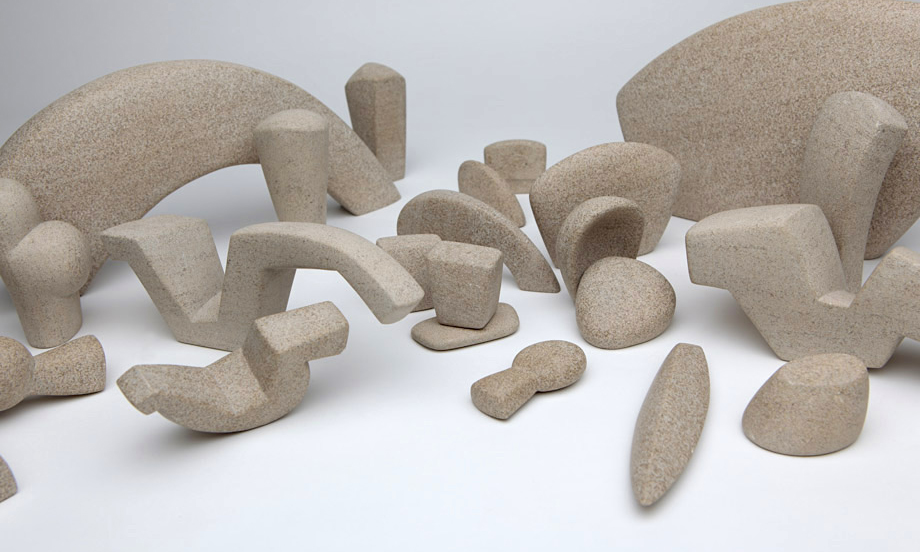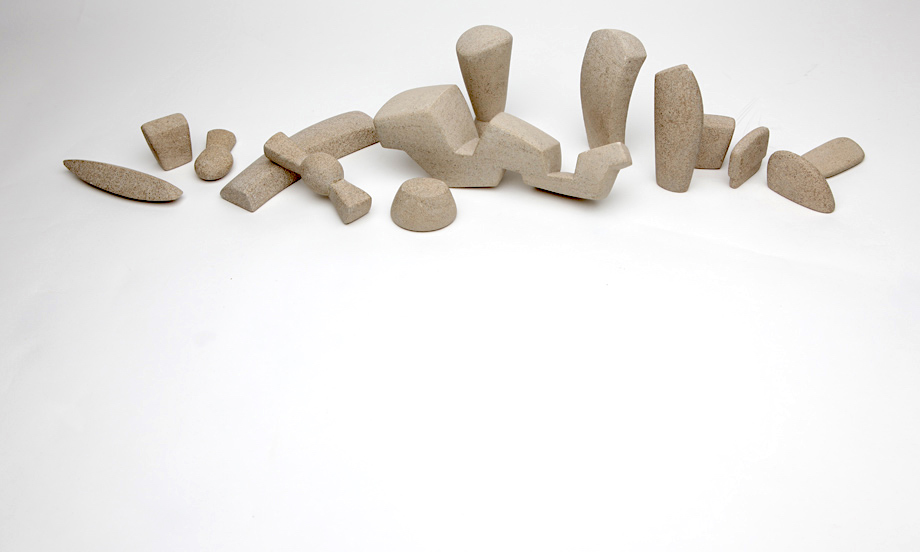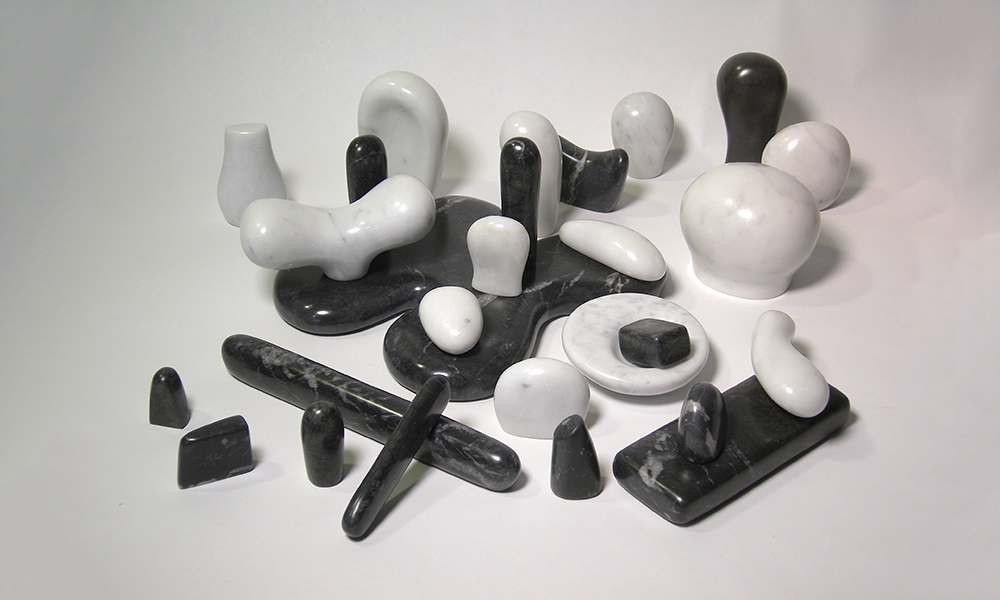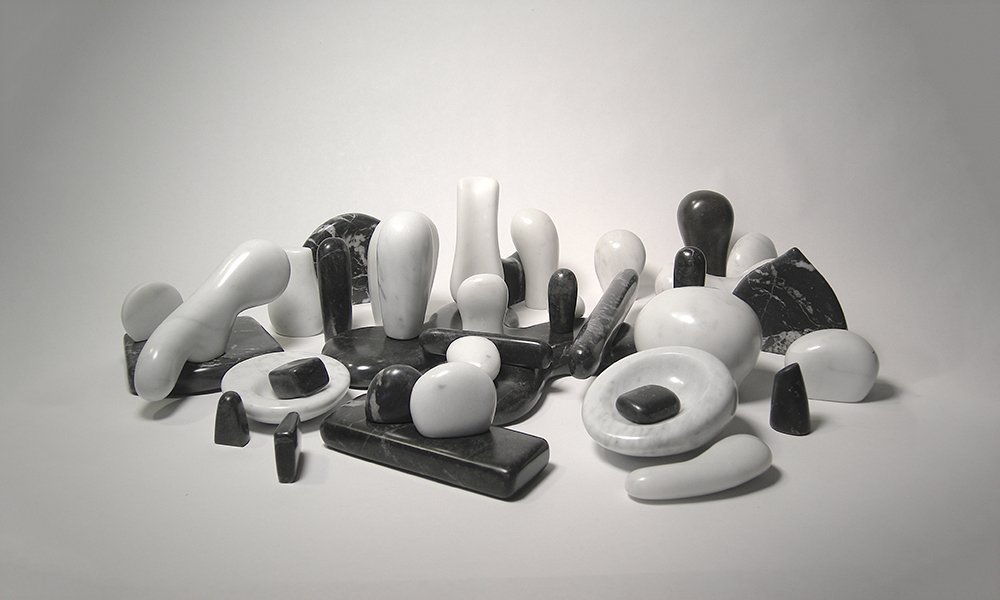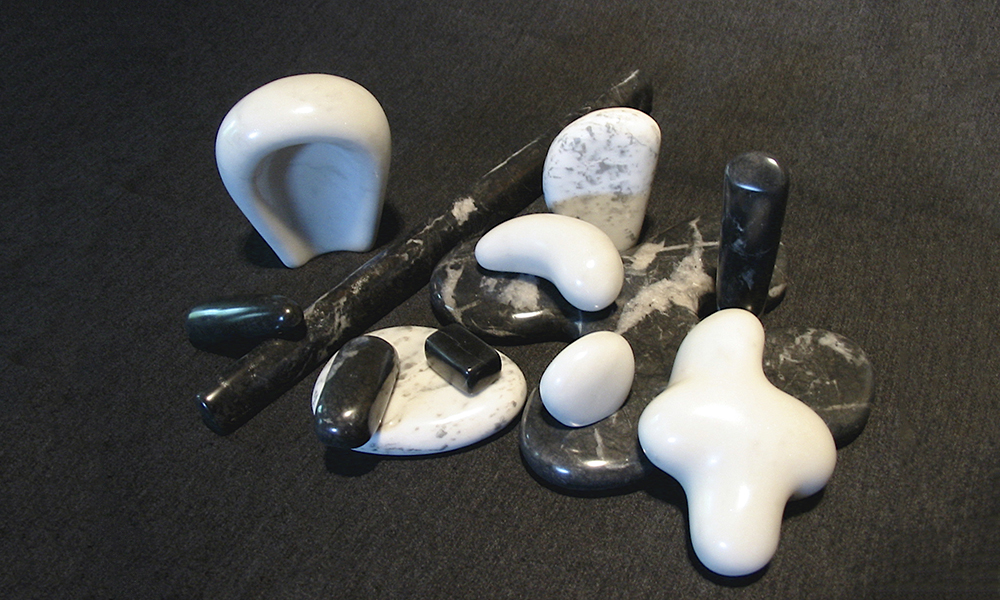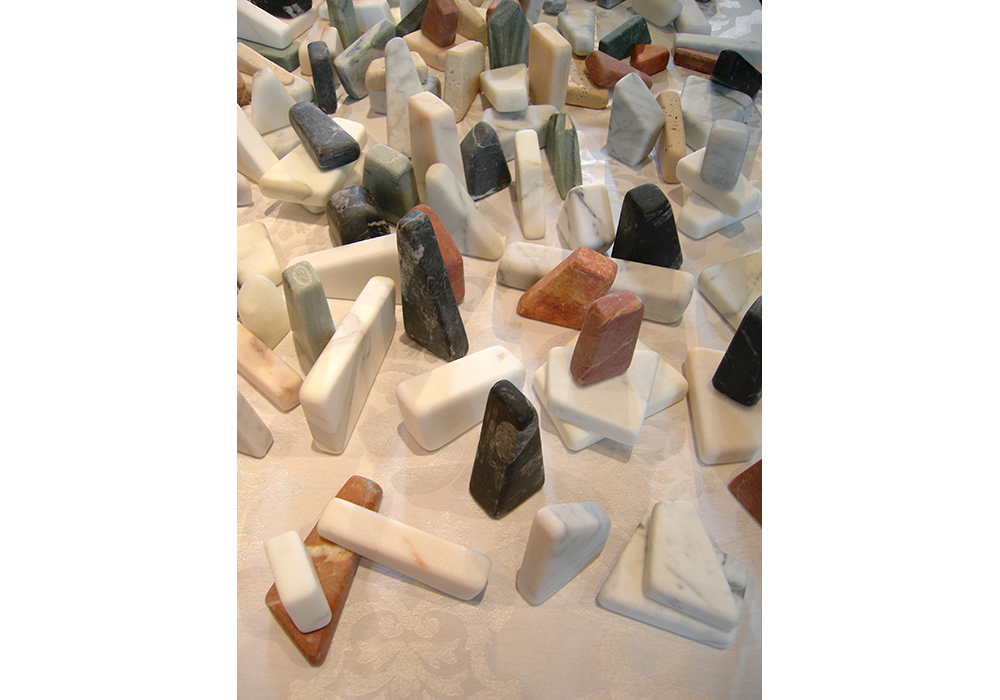Stone Table Suite Marble and Limestone
One begins with the essential shape or form: a single volume, compact maintaining the integrity of its materiality, like a mountain, a pebble, like ancient counterparts that often exist as fragments of their original form. Every stone, a first edition informed by ancestral stories, meta-narratives that continue to resonate with comedy and tragedy, romance and loss. Nicholas Wolterstorff wrote, “If you and I carve wood, apply paint to canvas, pile stone on stone, or inscribe marks on paper, we are dealing with things which bear to us the most intimate of relations.” This work then, puts the artist and viewer into a tactile pact, a kind of figuring game, a puzzle of multiple options and configurations.
It’s shaped language with the play of magnetic poetry.
It’s back to blocks, Erector Sets, pick-up sticks.
It’s a table setting, a stack of journals, ice cream cones in a pyramid, washed dishes in the drainer.
It’s cairns of stone with a directive, lumber piles, studio tubes curled with use, a collected series of novels by Faulkner, a chair tucked under its counterpart table.
It’s the act of love.
It’s how the mobile femur fits securely into the acetabulum, how the mystery of spirit is incarnate in this figure frame, how we at all times float and soar among other celestial orbs and the new day proves this music’s order and pitch.
It’s the keys, hammers, strings, and frame of a piano, the repair kit the piano tuner employs, the pads and curled body of a saxophone and the open fitted sound appropriate to the ear’s receptivity.
It’s a pearl stud in a woman’s earlobe, the recess of the priest’s lower lip that forms the gospel reading, the husk of a bread loaf’s crust and its soft baked fill, the chalice and its deep contents cupped by the bearer’s careful serving hands.
Resolution is made through improvising, the way conversations or dance naturally take place. Although one is not immediately aware of the next word or the next step, some idea has already begun to be formulated. We test a word, a phrase, or an anecdote to see if it fits the vision. We step in one direction and see if the work follows suit. Modifications are made, the work" rephrased" until we’ve got syntax.
Most of the time, the passion and the dilemma of creating is this moving from vague vision into a discovered reality with edge, mass, and space. Where one form begins, another ends. For every layer removed, another is found. Every plane is an active participant, every line, an integrated gesture, a figure of speech. As one old jazz friend used to say, we’re all “looking for the lake” which put more succinctly is looking for the truth, for a source, for a means to address that truth and source in this world.

